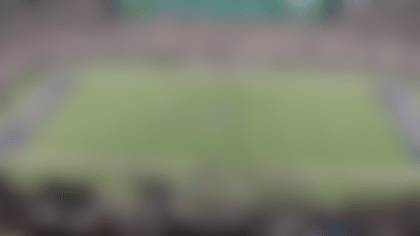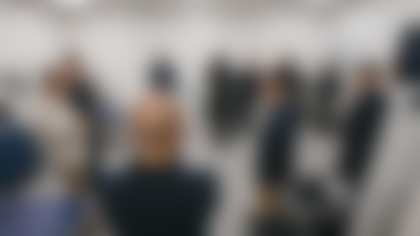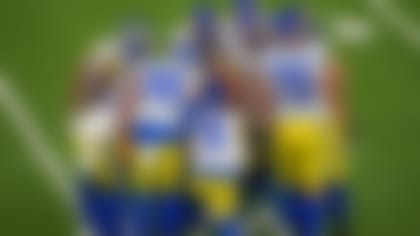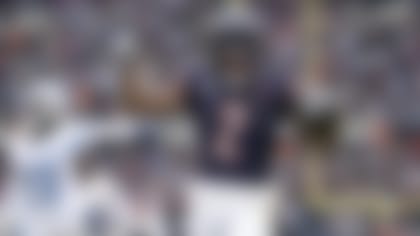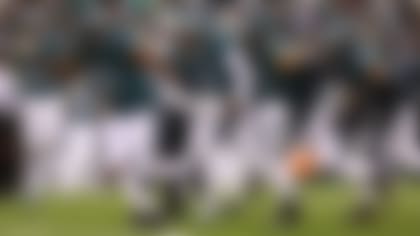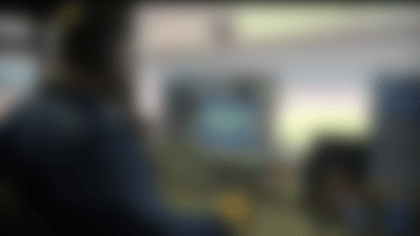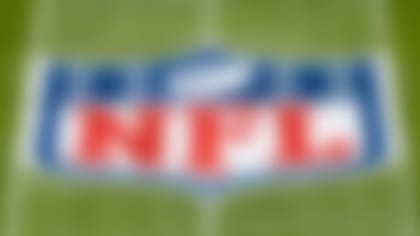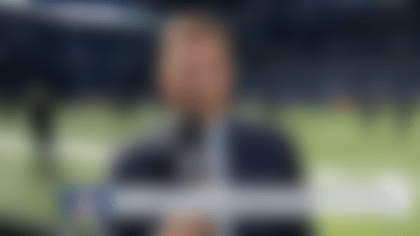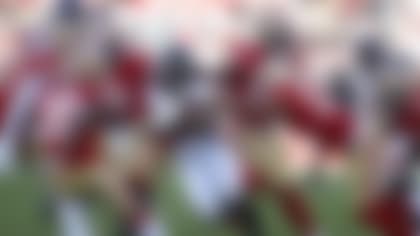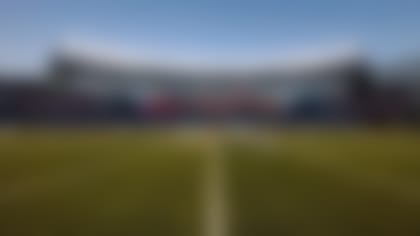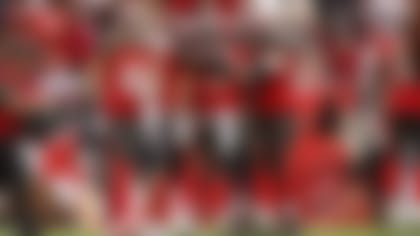Another Set of Eyes
High above the football field, inside a stadium booth, two certified athletic trainers—known as booth ATC spotters or "eyes in the sky"—scan the field and the live broadcast feed to help identify injuries and communicate with team medical staff.
Using the Injury Video Review System (IVRS), booth ATC spotters are in constant communication with sideline medical staff. As they identify plays for review, they can send video down to the field, with the assistance of technicians in the booth and on the sideline, for the team doctors to review to help diagnose potential injuries.
"The average fan may be watching the big play and where the ball is," said Dave Surprenant, a certified athletic trainer, after a game in Dallas. "We're responsible for the entire field."
"We're responsible for giving the medical staff an additional tool," he says. "A player may have been hit away from the play—that [the medical staff] didn't see—but in the booth, we see as much as we can."
Dave said these athletic trainers communicate with the sideline "so they can better understand how the injury took place, and then have better tools to treat those injuries."
The NFL's booth ATC spotters are retained by the League and unaffiliated with specific NFL teams, a measure required to ensure their objectivity.
All ATC spotters must meet the following criteria:
- Maintain a current certification by the NATA BOC
- Have an undergraduate degree from a four-year program
- Have a minimum of 10 years' experience as an ATC
- Have significant college and/or professional sports experience
- Not hold paid full-time or part-time employment with an NFL team within the last 5 years
- Not permitted to cover a game involving a team for which the spotter has had previous full-time employment
In addition to the two ATC spotters inside the stadium booth, an Unaffiliated Neurological Consultant (UNC) also monitors the broadcast video and audio feeds of each game and notifies the on-field UNCs of possible head, neck or spine injuries.
Medical Timeouts
The booth ATC spotters have the authority to halt play with a medical timeout if they observe a player who may have suffered a concussion or head injury.This timeout does not count against either team. Game officials also have the authority to send a player off the field for medical evaluation.
The adoption of the medical timeout marks the first time ever in a major sport that a non-participant can freeze the game clock for player safety.
"The game moves extremely fast," said Surprenant. "But we have the capability to stop a game and do a medical timeout, so a player can receive medical care," he said.
Historic Timeout
The NFL's first medical timeout came during the 2015 season.
The Rams, playing in St. Louis at the time, were leading the Pittsburgh Steelers at home in the fourth quarter.
A Rams running back broke through for a seven-yard run before being tackled by Steelers cornerback Antwon Blake.
The independent spotter called a medical timeout and Blake was taken from the field and evaluated for a concussion.
In the end, Blake was cleared—and was able to finish the game.
How a Medical Timeout Works
In the event the booth ATC spotter: (i) has clear visual evidence that a player displays obvious signs of disorientation, is clearly unstable, or displays other obvious sign of concussion; and (ii) it becomes apparent that the player will remain in the game and not be attended to by the club's medical or athletic training staff, then the booth ATC spotter will take the following steps:
- If the player does not receive immediate medical attention, the booth ATC spotter contacts the referee over the Official-to-Official communication system to identify the player by his team and jersey number.
- The ATC Spotter will then contact the medical staff for the player involved to advise that the player appears to be in need of medical attention.
- Upon being called on by the booth ATC Spotter, the referee will immediately stop the game, go to the player in question, and await the arrival of the club's medical personnel to ensure that the player is attended to and escorted off the field. The game clock and play clock will stop (if running), and remain frozen until the player is removed from the game.
- Medical personnel—including an Unaffiliated Neurological Consultant—will evaluate the player and make a return-to-play decision following the NFL Game Day Concussion Protocol.
- The booth ATC spotter remains in contact with the medical staff until the medical staff confirms that a concussion evaluation has occurred or is underway. It is the booth ATC Spotter's responsibility to confirm that a concussion evaluation has occurred prior to the player returning to play. If a booth ATC spotter observes the player returning to the game without receiving express confirmation that an evaluation has occurred, the booth ATC spotter shall signal to the official for a medical timeout.

